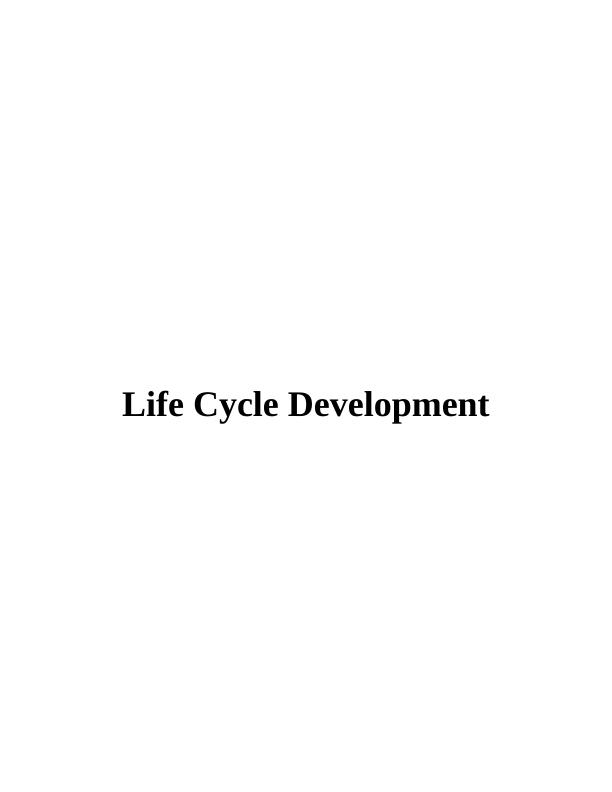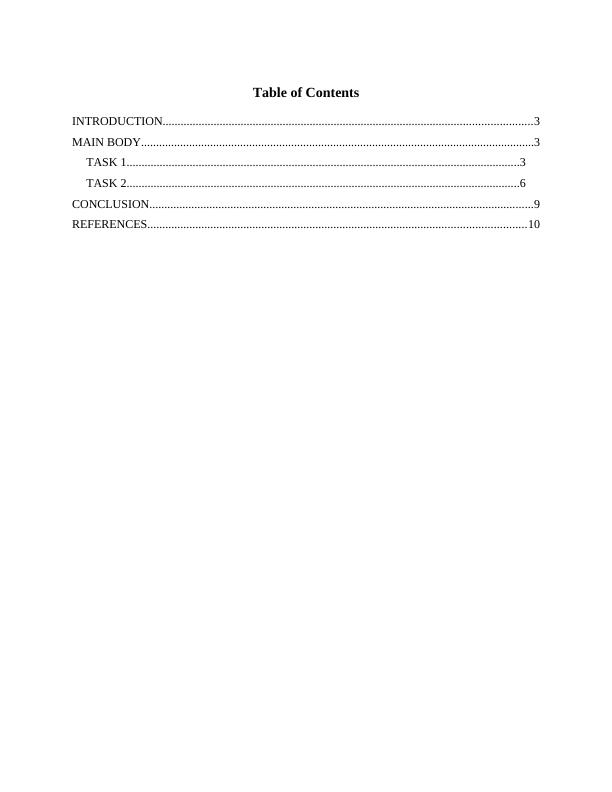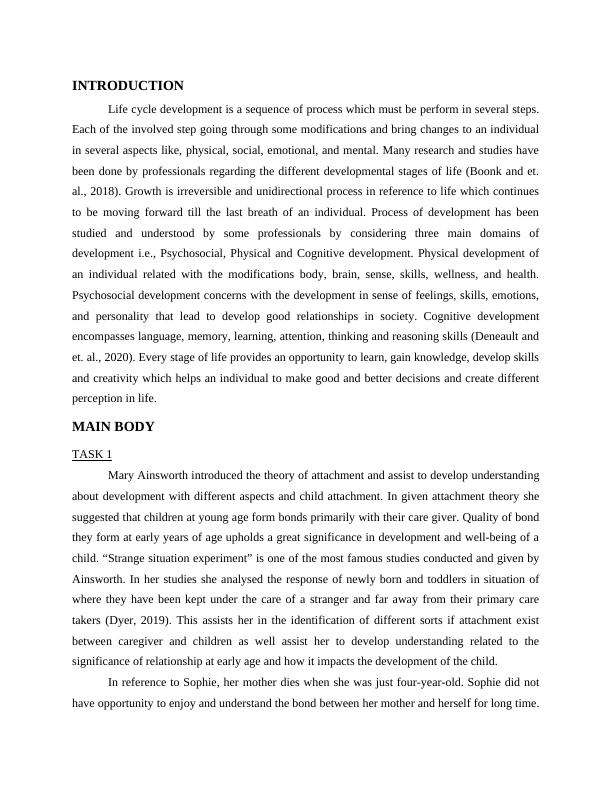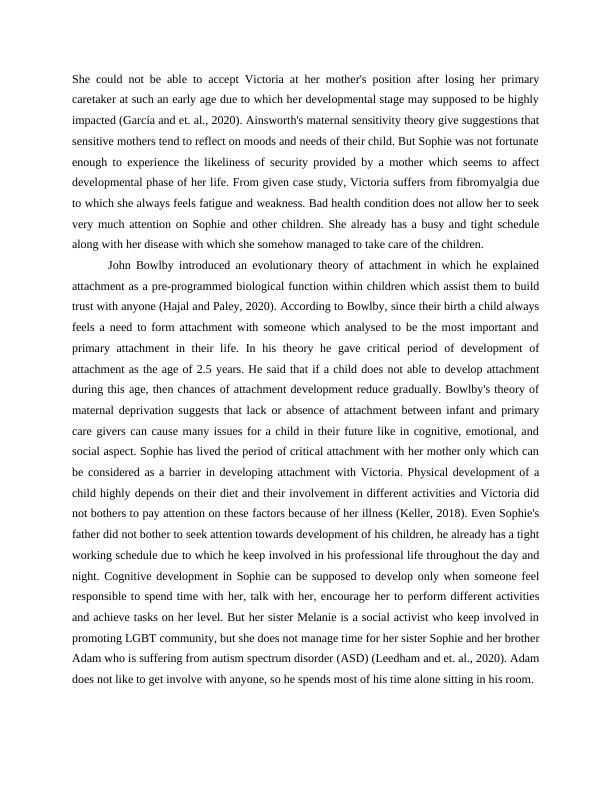Life Cycle Development: Understanding the Impact of Attachment and Need Theory on Developmental Stages
12 Pages4090 Words283 Views
Added on 2023-06-04
About This Document
This article explores the impact of attachment and need theory on developmental stages in life cycle development. It discusses the different stages of development and how they impact physical, social, emotional, and mental aspects of an individual. The article also examines the theories of Mary Ainsworth, John Bowlby, Peggy Emerson, and Rudolph Schaffer, and how they relate to the case study of Sophie. Additionally, the article discusses Maslow's hierarchy of needs and how it applies to Sophie's situation.
Life Cycle Development: Understanding the Impact of Attachment and Need Theory on Developmental Stages
Added on 2023-06-04
ShareRelated Documents
End of preview
Want to access all the pages? Upload your documents or become a member.
Life Cycle Development: Stages, Theories, and Needs Theory
|10
|3876
|392
Developmental Theories in Early Childhood
|14
|4085
|1
Assignment about Early Brain Development
|9
|1328
|26
Human Relationships and Life Transitions: Understanding Psychosocial Development in Early Childhood
|6
|1746
|59
Human Development Across the Lifespan
|8
|2053
|361
Psychology Assignment 2022
|8
|1904
|42




